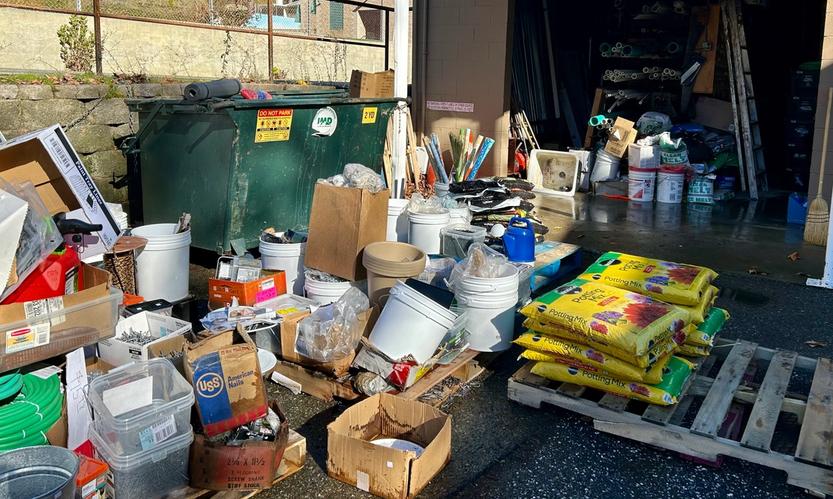On June 28, 1969, in the early morning hours, police in New York City raided the Stonewall Inn in the Greenwich Village neighborhood of Lower Manhattan. Stonewall Inn was and is a gay bar and recreational tavern. At the time, it was the only bar for gay men in New York City where dancing was allowed, and dancing was thus its main draw. In 1969, police raids on gay bars in New York City were frequent, occurring on average once a month for each bar. During a typical raid, the lights were turned on and customers were lined up and their identification cards checked. Those without identification or dressed in full drag were arrested; others were allowed to leave. Some of the men used their draft cards as identification. Women were required to wear three pieces of feminine clothing and would be arrested, if found not wearing them. Typically, management and employees of the bars were also arrested. Raids usually took place in the early evening hours, so that, afterwards, the bars could go back to business.
At 1:20 AM on that Saturday, police arrived and announced, “Police! We’re taking the place!” This had been preceded by two undercover policewomen and two undercover policemen entering the bar early in the evening, in order to gather evidence. There were approximately 200 people in the bar that night. However, for once, things did not go as planned. Women did not go to the bathrooms to have their sex verified. Men refused to line up to be identified. The decision was made to transport all who were to be arrested to the police station, while others were let go. But, those who were not arrested did not leave, after being released from the front door. Instead, and within minutes, between 100 and 150 people had congregated outside. As the police began to put people into patrol wagons, someone shouted, “Gay power!”, and someone else began to sing, “We Shall Overcome”, with the crowd generally reacting with amusement and general good humor — mixed, however, with growing and intense hostility. So, when a woman in handcuffs was clubbed on the head by a police officer, then picked up and thrown into a patrol wagon, the crowd became a mob and became violent.
It is important to note that not everyone in the crowd was gay. So, when police lashed out, they were attacking a vast array of people who had been attracted to the scene by the commotion. Of those eventually arrested, several were not gay, and had not been in the bar that evening.
At one point, a phalanx of police officers with raised nightsticks was facing off with a “kick line” of transvestites. One witness described it this way: “I just can’t ever get that one sight out of my mind. The cops with the [nightsticks] and the kick line on the other side. It was the most amazing thing ... And all the sudden that kick line, which I guess was a spoof on the machismo ... I think that’s when I felt rage. Because people were getting smashed with bats. And for what? A kick line.”
The crowd was finally cleared about 4:00 AM. Almost everything in the Stonewall Inn was broken, and what little liquor remained (the police had confiscated most of it) was given away free afterwards. Stonewall’s windows were covered with boards that night, and graffitied messages in support of LGBT rights and gay bars appeared the day afterward. On June 29, a demonstration took place, attracting hundreds of protestors of all sexualities. A second riot took place on July 2, ending the next day, when the police dispersed the protests. Poet Allen Ginsberg said, “…the guys there were so beautiful — they’ve lost that wounded look that fags all had 10 years ago”.
By the end of 1969, the Stonewall Inn had closed. A holding company purchased the property in March, 1970. By 1973, the original gay bar had been divided into two storefronts at the ground level and apartments on the second story. Several businesses came and went over the years. In May, 1990, a gay bar named New Jimmy’s opened in one-half of the first story. In contrast to the first bar, the police did not raid the revived gay bar, and gay officers sometimes even ordered drinks there. However, by 1999, that bar had become a clothing store, while the other first story half of the property became a gay bar.
That year, the building was added to the National Register of Historic Places, and further designated a National Historic Landmark in 2000. The Stonewall Inn reopened in March 2007. In the years that followed, it became a popular tourist spot in the city. In 2016, the Stonewall National Monument was established around the bar.
The Stonewall riots are considered a watershed event for the gay liberation movement. Academic studies tend to divide into pre- and post-Stonewall analyses. Also, because of the boldness and courage displayed in 1969, many people became less afraid of being openly LGBTQ+. The happenings at the Stonewall Inn are considered the foundational events for Pride Month.
Library@Nite
A reminder: this coming Monday, June 9, is the monthly iteration of Library@Nite at the Downieville Library. We will be open from 6:00 to 8:00 PM. Hope to see you there!
Featured Articles

Sierra Hardware Plans Extensive Repairs After Flood Damage →
December 8, 2025
Sierra Hardware faces extensive repairs after Thanksgiving flood damages store flooring and drywall.
Sheriff’s Office Accepts $60,000 Grant for New Search and Rescue Team →
December 2, 2025
Confusion Surrounds Release of the Plumas County Grand Jury’s Report →
December 4, 2025
WCB Considers Grant for Sierra Valley Tribal Land Purchase →
Updated November 22, 2025
Downieville Fire Auxiliary Hosts Annual “Holiday on Main” Event Saturday →
December 2, 2025